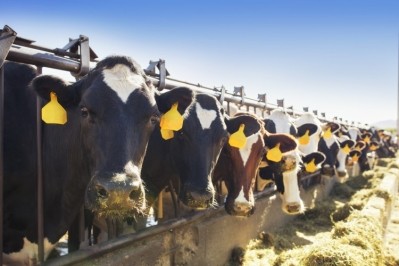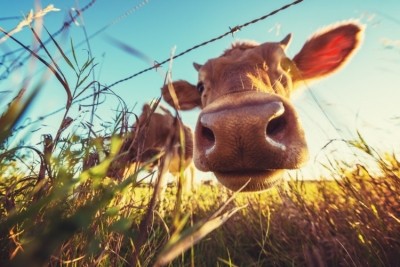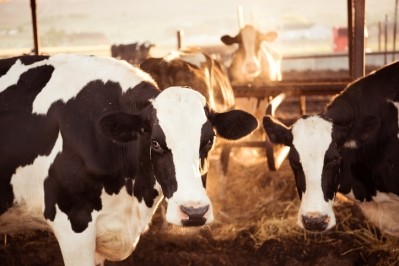US bird flu outbreak in dairy cattle: What we know so far

Almost three months after the first case of a highly pathogenic avian influenza infection in a dairy cow was officially confirmed, more than 80 herds dairy herds across 11 US states have been affected. The virus has also spread to three people and have raised concerns if its continued spread could eventually lead to dangerous mutations.
Here’s what you need to know.
What is this virus?
In March 2024, the USDA confirmed what is believed to be the first ever case of a highly pathogenic avian influenza (HPAI) infection in dairy cattle.
The strain isolated from affected herds is Type A H5N1, or H5N1(A).
HPAI is a highly infectious disease that predominantly spreads among birds, including domestic and wild species.
In birds, the disease is often fatal; there is no cure for it, and when there is an outbreak at a poultry farm, producers usually have to cull the entire flock and thoroughly disinfect the premises in order to eradicate the virus.
Strains of HPAI can spread to other mammals, particularly scavengers or those that may eat infected birds. But before March 2024, the virus had not been detected in cattle.
Where has the virus spread?
So far, 11 US states have confirmed cases: Texas, Kansas, New Mexico, Colorado, Idaho, Michigan, North Carolina, Ohio, South Dakota, Iowa, and Wyoming.
What is the virus doing to dairy cows?
In dairy cows, the infection isn’t fatal, but milk loss is one of the main symptoms of the disease.
Alex Hamberg, bureau director of the Pennsylvania Department of Agriculture, reported that in some herds in Texas, milk production dropped between 4 to 20lb (2-9 liters) per cow, while others dried off completely.
Overall, the virus leads to around 20% drop in milk production in affected farms.
How does the virus transmit?
US federal and state authorities continue to investigate how the virus spreads, but there is now more clarity around how the first infections occurred.
In a webinar attended by DairyReporter, Dr. Tavis Anderson, a researcher at the National Animal Disease Center, explained that the viral outbreak in dairy cattle had likely been ’bubbling away’ for several months before it caught the attention of veterinarians in the spring of 2024.
He said that the virus responsible for infecting cattle had first been transmitted from wild birds to dairy cows in a ‘single spill-over event’, likely during December 2023. It is unclear exactly how the cattle got infected, but the virus is known to transmit through infected birds’ saliva, feces, or contaminated water.
Dr. Anderson also confirmed that dairy cows that are not yet showing signs of infection are also likely to be spreading. This explains how a herd in Kansas tested positive for HPAI after taking in cows from Texas, where infections had been first reported, he said.
Is milk safe?
There is evidence that the raw milk of infected cows – including asymptomatic carriers - is also contagious. This has prompted the US Food and Drug Administration (FDA) to increase its warnings to consumers who drink raw milk while the investigation continues and the risk to human health from ingesting viable viral particles is fully assessed.
In June, the FDA wrote to states that allow the sale of raw dairy products within their borders to provide advice and recommendations on preventing transmission from raw milk consumption.
For example, the regulator has asked these local authorities to set up testing programs to catch the presence of the virus in dairy herds that produce raw milk, and to stop the sale of raw milk ‘that may present a risk to consumers’.
Pasteurization – the process of heat-treating milk to inactivate harmful pathogens and viruses – is effective against H5N1, meaning that milk sold commercially is considered safe for consumption.
How does the virus affect humans?
There have been three cases of humans infected with H5N1(A) in the current US outbreak among dairy cows.
The first case originated in Texas on April 1 and was the second ever case of HPAI in a person in US history, according to CDC. Globally, this was likely the first time a person had been infected with the virus by a dairy cow.
A second human infection was then reported in Michigan on May 30. The two cases were unrelated and both patients – reportedly dairy workers who had been exposed to infected cows – recovered with only mild symptoms, such as eye redness.
Shortly after the second human infection was confirmed, the news of a third one – also in Michigan - broke. That person had also been exposed to infected dairy cattle, but their symptoms were different to the first two cases. The third patients displayed acute respiratory illness symptoms, which are more typically associated with the H5N1(A) influenza.
While there is currently no evidence that the virus has adapted enough to spread to humans or other mammals more easily, the outbreak has raised concerns at the World Health Organization, with chief scientist Dr. Jeremy Farrar stating that increased incidence of transmission in other species could raise the risk of viral adaptation.
“The great concern is, of course, that in doing so and infecting ducks and chickens – but now increasingly mammals – that that virus now evolves and develops the ability to infect humans. And then critically, the ability to go from human to human transmission,” he said.
The CDC has maintained that the risk to the public is low, but continues to monitor the situation. More than 260 people had been closely monitored as a result of being exposed to infected animals, the CDC has said, with at least 33 having been tested after developing flu-like symptoms.
When will the virus stop spreading?
This is certainly the question on everyone’s lips, but there’s little clarity on what the answer is.
However, a spell of hot weather could go far to reducing the spread of the virus, experts have suggested.
In 2015, a bird flu outbreak that killed 40 million birds in the US petered out once the summer’s hot temperatures arrived.
“When the temperatures start to rise, the virus doesn’t like to live,” said Dr. Danelle Bickett-Weddle, a veterinarian who responded to a DairyReporter query during a recent NMPF webinar. “I am hopeful that maybe we get some of that environmental kill-effect too from our good-old sunshine.”
How is the federal government supporting dairy farmers?
Since the start of the outbreak, dairy farmers, irrespective of whether they’ve had cases of infected cattle or not, have been urged to bolster biosecurity measures.
Federal and state governments have also moved to impose movement restrictions on lactating dairy cows that are moved interstate and have encouraged farmers to test their herds by promising to pay for some of the tests.
But there are caveats, such as that farmers are only legally required to test up to 30 animals from assembled lots when moving from one state to another.
To stimulate regular testing of cattle as well as the up-take of biosecurity measures, such as the wearing of personal protective equipment by farm workers, the USDA is offering the following:
Up to $2,000 per month per premise for supplying PPE to employees; up to $1,500 per premise to develop biosecurity plans, plus $100 for producers who buy and use an in-line sampler for their milk system. Also in the package, the USDA will provide up to $2,000 per month per premise for setting up a heat-treatment system that can inactivate the virus in raw milk; and up to $100 per month to cover the costs of samples sent out for testing at specialist laboratories. More on this here.
DairyReporter delivers the latest industry news and analysis directly to your inbox. If you want to follow our coverage, make sure you subscribe to our free newsletter.








